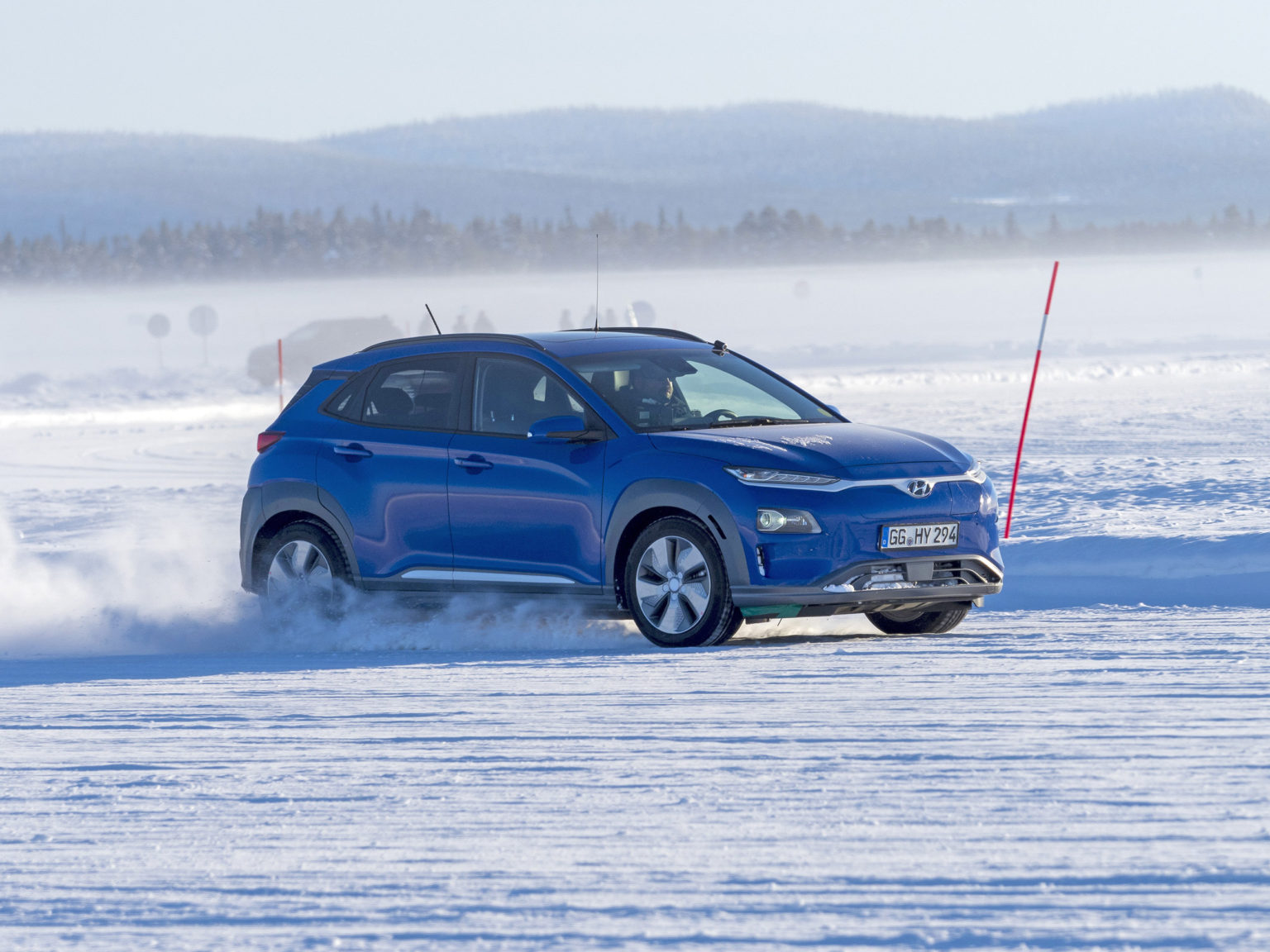Driving at low temperatures can deplete battery usage. Between power it takes to move the car, a heater running, heated seats on, and the climate control fan running, driving an electric vehicle (EV) in the cold isn’t an ideal use case. Hyundai and Kia which share common ownership, are aiming to change that with heat pump innovation.
The short of it is that the latest design allows EV drivers to heat their car’s cabin in cold weather without significantly impacting electric driving range, unlike other EVs. This also means that drivers can expect more consistent range prediction numbers from their propulsion system.
During development, the Koan EV was tested by Hyundai in Lapland, Sweden, where temperatures are extremely cold.Photo courtesy of Hyundai Motor Europe
Kia introduced the technology in 2014 on the Soul EV. There, it was made up of a compressor, evaporator, and condenser. The heat pump captured waste heat given off by the car’s electrical components and recycled it into the cabin.
Further development has moved the technology into other Kia and Hyundai products while increasing the number of sources it gets heat from, making range even more predictable. The pump now gathers heat from drive motors, on-board chargers, inverters, the battery pack, and slow charger.
Recently, the Norwegian Automotive Federation compared 20 electric vehicles that are sold in Norway in cold and warm weather conditions, analyzing which had the most consistent driving range and charging performance. They compared this to the range claimed by each EV’s manufacturer.
The Hyundai Kona Electric took the crown. It traveled 405 km in the cold compared to its claimed range of 448 km (WLTP combined cycle). In severe cold weather, the Kona Electric delivered 91 percent of its promised WLTP combined range.
Other vehicles tested include: Audi Quattro 50, Audi Quattro 55, BMW i3 120Ah, Hyundai Ioniq, Jaguar I-Pace, Kia e-Niro (Niro EV), Kia e-Soul (Soul EV), Mercedes EQC, Nissan Leaf 40kWt, Nissan Leaf 62kWt (Plus), Opel Ampera-e, Renault Zoe, Seat Mii Electric, Skoda Citigo-E, Tesla Model X, Tesla Model 3, Volkswagen e-Golf, and the Volkswagen e-Up.
To test the vehicles, “ordinary” drivers drove the vehicles in a variety of conditions on country and city roads, as well as highways, following the speed limit. All the cars were charged indoors overnight and all range tests were done with a cold start and no pre-heating.
Each model was test driven in Eco mode (or similar) with the cabin temperature set to 21°C and the seat warmer on the lowest setting. Each driver actively used regeneration.
The test drive route took drivers from Oslo, where it was 3°C with sleet coming down. The coldest temperature during the test was -6°C and during most of the drive it was snowing. Speeds varied from 60 km/h to 100 km/h.
It’s important to note that tire diameter, topography, and driving style all play a role in range as well.
On average, the vehicles tested drove 20 percent shorter than their advertised range. Hyundai, Audi, and Kia vehicles performed the best in the testing. Tesla and Opel models were the farthest off from their WLTP estimates.








